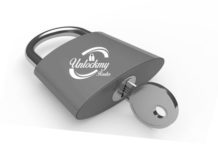What are the LTE signal levels and what should be the optimal values?
To determine the quality of the signal, pay attention to the following fields:
– Signal strength
– RSRP
– RSRQ
– SINR
– CQI
Below chart shows what values are considered good and bad for the LTE signal strength.

Explanations of these values:
SINR/SNR – The signal-to-noise ratio of the given signal.
RSRP – Reference Signal Received Power – the average power of the received pilot signals (Reference Signal) or the level of the received signal from the Base Station. The RSRP value is measured in dBm (dBm). The LTE modem signal strength can also be determined using the SIGNAL STRENGTH indicators on the top panel of the device. The maximum level correspond to three burning indicators. If no indicator is lit, then the signal strength is insufficient to connect to the LTE network. With RSRP = -120 dBm and below, the LTE connection may be unstable or not installed at all.
RSRQ – Reference Signal Received Quality – characterizes the quality of received pilot signals. The RSRQ value is measured in dB (dB).
SINR – Signal Interference + Noise Ratiom also called CINR (Carrier to Interference + Noise Ratio) is the ratio of the signal level to the noise level (or just the signal-to-noise ratio). The SINR value is measured in dB (dB). It’s simple: the higher the value, the better the signal quality. At SINR values below 0, the connection speed will be very low, since This means that there is more noise in the received signal than the useful part, and the probability of losing an LTE connection also exists.
CQI – Channel Quality Indicator – For each subscriber station UE (User Equipment) and each frequency block of the carrier, CQI channel quality indicators (Channel Quality Indicator) are formed. Depending on the required data rate for the UE, the base station makes a decision on the number of resource blocks allocated to a particular user, and which frequency blocks to allocate to users depends on the CQI indicator. Users are allocated those resource blocks that have the highest CQI, and therefore the best signal-to-noise ratio. This parameter can take values from 0 to 15. The higher the value, the better (the higher the speed that an LTE base station can allocate).

